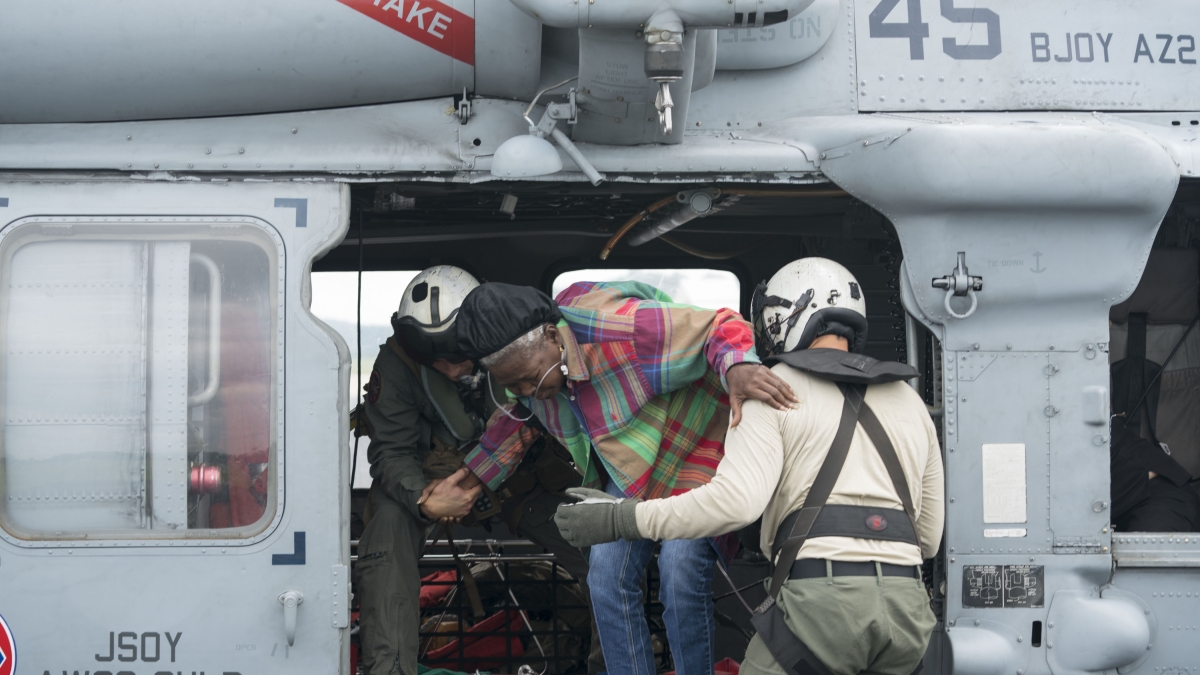As superstorm Irma continues its destructive path and as residents in Texas and Louisiana grapple with the aftermath of Hurricane Harvey, health-care providers are responding to an onslaught of patients in need of care. Cheryl Schmidt, a clinical professor in Arizona State University’s College of Nursing and Health Innovation, well understands what the communities there are facing.
She has been a volunteer nurse in the American Red Cross since 1974 and served 70,000 Gulf Coast residents in Arkansas who evacuated during Hurricane Katrina. She has taught disaster-preparedness education to health-care professionals, nursing students and community members throughout the United States.
Question: What does a “typical” day look like for health-care providers responding to a major natural disaster like Irma or Harvey? What kinds of issues are they dealing with?
Answer: Health-care providers are most likely facing the same health issues we faced in 2005 during Hurricane Katrina. People with chronic illnesses and disabilities present the biggest challenge, especially if they are forced to evacuate their homes without their medications and supplies. During Hurricane Harvey, volunteers were working 12-hour shifts and sleeping on military-style cots in staff shelters. American Red Cross volunteers provide a wide range of services to people affected by the disaster, including health and mental-health care, helping to replace lost medications and medical equipment, and providing food, clothing and shelter for those who lost their homes or are displaced temporarily by the disaster.
Q: What health problems can arise from a major storm like Harvey or Irma, and how can people protect themselves from those risks?
A: Even people who are generally healthy face several risks during disasters such as the massive flooding in Texas. The biggest risk is drowning after driving through flooded streets. The statement, “Turn around, don’t drown” is ignored too often by people desperate to escape the area.
People who wade through floodwaters may develop skin rashes from the toxic chemicals that are washed out of garages and tool sheds, or from sewage in the water, like they experienced in New Orleans in 2005. It’s important to shower as soon as possible after contact with contaminated water.
Carbon monoxide from portable generators may cause suffocation for those who try to shelter in place at home, so only operate generators outdoors. Once they arrive in crowded shelters, people face an increased risk of respiratory and gastrointestinal illnesses.
As floodwaters begin to recede, standing water may increase breeding of mosquitos. Standing water should be cleaned up as soon as possible, and people should wear mosquito repellant when outdoors.
Q: September is National Preparedness Month, and this year’s theme is, “Disasters Don’t Plan Ahead. You Can.” What can each of us do to prepare ourselves and our families for a disaster?
A: It is easy to become complacent living in areas that face less risk of natural disasters. But any area is at risk for man-made disasters such as apartment fires, overturned tankers transporting toxic chemicals, or even terrorist attacks.
Everyone should make at least a written plan of what they might need if they had to leave their home on short notice and never return. Internet sources such as www.redcross.org and www.ready.gov provide templates for such plans.
At a minimum, we should each have a “go-bag” containing:
- One week’s worth of daily medications, or at least a list of medications
- Copies of important papers (or scanned documents on a USB drive) such as proof of insurance for house and vehicle
- Water and non-perishable food
- First-aid kit
- Flashlight with extra batteries
- Small, battery-powered radio
- Change of clothing
- Personal hygiene supplies
Each individual and family should personalize their lists and supplies, preparing them to quickly evacuate the area or to shelter in place.
Top photo: Naval Aircrewman 2nd Class Jansen Schamp (left) and Naval Aircrewman 2nd Class Rion Johnson assist with a medical evacuation during Hurricane Harvey relief efforts. U.S. Fleet Forces Command sent personnel and assets to bolster Northern Command's support of the Federal Emergency Management Agency's assistance to federal, state and local authorities ongoing relief efforts in the aftermath of Hurricane Harvey. Photo by Mass Communication Specialist 1st Class Christopher Lindahl/U.S. Navy
More Health and medicine

The science of sibling dynamics: Why we fight, how we relate and why it matters
We have Mother’s Day, Father’s Day and even Grandparents’ Day. But siblings? Usually they get a hand-me-down sweatshirt and, with any luck, a lifetime of inside jokes.But actually, there is a…

New study seeks to combat national kidney shortage, improve availability for organ transplants
Chronic kidney disease affects one in seven adults in the United States. For two in 1,000 Americans, this disease will advance to kidney failure.End-stage renal failure has two primary…

New initiative aims to make nursing degrees more accessible
Isabella Koklys is graduating in December, so she won’t be one of the students using the Edson College of Nursing and Health Innovation's mobile simulation unit that was launched Wednesday at Arizona…


